Regional diplomacy fails Syrian economy
6 June 2024

Syria’s dire economic position continues to worsen. In a report issued in May, the World Bank predicted the economy will shrink by 1.5% this year, following a 1.2% decline in 2023.
The economy had already contracted by 54% between 2010-21, according to the Washington-based body. Its international trade has also entered freefall, with the value of exports falling from $8.8bn in 2010 to just $0.7bn in 2023, while imports dropped from $17.5bn to $3.2bn over the same period. Syria was once an oil exporter with a large agriculture sector, but it has become reliant on fuel and food imports.
What makes matters worse is that the cost of importing goods is now far higher than it once was, thanks to the collapse in the value of the Syrian pound. In 2011, you needed £Syr47 to buy one US dollar; by 2023, the cost had risen to more than £Syr12,500 for every greenback. Last year alone, the Syrian pound declined by 141% against the dollar, while inflation was running at 93%.
Agriculture fared slightly better in 2023 due to improved weather conditions compared to 2022, but the north of the country suffered a devastating earthquake in February 2023, which killed several thousand people and destroyed thousands of homes.
The authorities have few spare resources to devote to rebuilding areas devastated by natural disasters or the civil war.
The government has lost control over oil revenues to the Autonomous Administration of North and East Syria (AANES), which holds the oil-rich parts of the country. The security challenges of the past 13 years have also led to a downturn in most other parts of the economy and enfeebled the government’s ability to collect taxes.
The World Bank estimates that, after adjusting for inflation, government revenues are now 85% lower than before the war.
The poor living conditions prompted a fresh wave of protests in Daraa and Al-Sweida in August 2023, which then spread to other government and rebel-controlled areas of the country. Locals have much to complain about.
The International Rescue Committee reckons that nearly three-quarters of Syria’s population, or more than 16.5 million people, require some sort of humanitarian assistance and upwards of 90% of Syrians now live in poverty.
Smuggling economy
One area of activity that has prospered has been the production and export of Captagon. This illegal amphetamine-like drug is smuggled in huge quantities into the Gulf, where it finds a ready market despite concerted efforts by the authorities there to clamp down on it.
The World Bank has estimated Syria’s Captagon trade was worth between $1.9bn and $5.6bn a year from 2020-23; that higher figure is not far below the country’s GDP of $6.2bn in 2023.
Those linked to the Syrian trade are thought to earn between $600m and $1.9bn in revenue a year. To put that in context, the revenue generated from all legal exports from Syria last year was $960m.
The Captagon trade might be enriching some figures close to the regime of President Bashar Al Assad, but it is also undermining the country’s wider economic prospects.
One potential avenue for rebuilding the shattered economy is to attract inward investment and the rich Gulf countries are an obvious potential source for that.
However, despite the diplomatic normalisation with Gulf governments over the past few years, the hoped-for investment flows have not materialised, with unhappiness over the Captagon trade a key factor – even if there have been some signs of a reduction over the past year or two.
Caroline Rose, who runs the Washington-based New Lines Institute’s research project on the Captagon trade, said: “We keep tabs of recorded Captagon seizures … and noted a slight dip in Captagon seizures region-wide between 2022 and 2023, so the reduction in seizures could be related to a stabilisation in the supply and production of Captagon.” However, she added that Syria continued to export the drug “at industrial levels”.
Investment brakes
The drug trade is not the only barrier to attracting foreign capital, though. Inward investment has also been hampered by US sanctions set out under the Caesar Syria Civilian Protection Act of 2019, generally known as the Caesar Act, and the myriad problems within the domestic economy are also a major hurdle for any would-be investor.
“When it comes to business and investment, Syria does not really provide any good environment for that. You have high costs, high risks, absence of rule of law, low purchasing power,” said Haid Haid, a consulting fellow at UK thinktank Chatham House, in April. “Businesses in general will not be tempted to go and open businesses there because the gains are low.”
Some regional aid has been flowing in, though. Arab countries raised their contributions from 2% of the total aid in 2022 to 15% in 2023, with the UAE, Kuwait and Saudi Arabia being the largest donors.
Others have been focusing their efforts on the plight of the millions of Syrian refugees displaced inside the country and beyond its borders in Turkey, Jordan, Iraq and Lebanon. Since the war started, around half of Syria’s 23 million-strong population has been displaced, with more than 5 million fleeing abroad.
Some €7.5bn ($8.1bn) of grants and loans were pledged by international donors to help Syrian refugees at the Brussels VIII Conference on Supporting the Future of Syria and the Region on 27 May.
But until a political resolution to the civil war can be found, Syria’s enormous economic and humanitarian crises are unlikely to be solved. Speaking at the Brussels conference, the European Union’s foreign policy chief Josep Borrell said a “Syrian-owned political solution … is the only credible path for all Syrians to live in peace and stability, and for refugees to return home.”
Exclusive from Meed
-
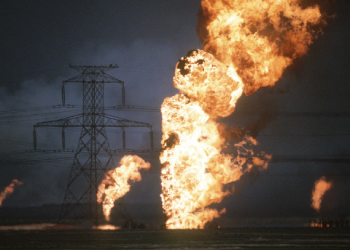 Kuwait tenders refinery contract
Kuwait tenders refinery contract15 July 2025
-
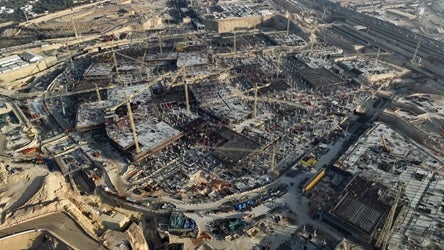 Webuild wins $600m Diriyah Square project deal
Webuild wins $600m Diriyah Square project deal14 July 2025
-
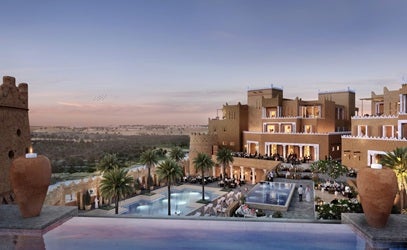
-
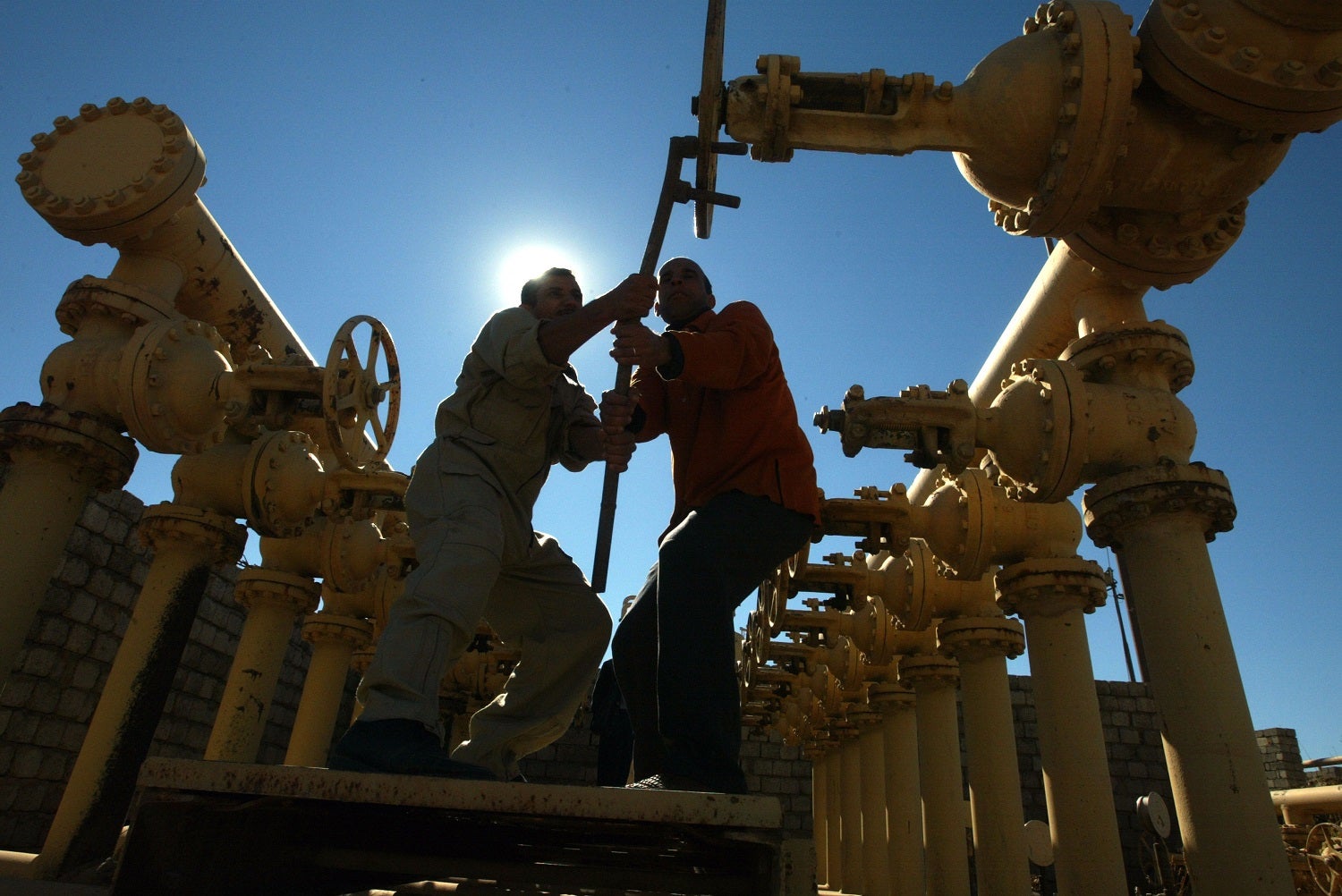 Penspen to expand workforce in Neutral Zone
Penspen to expand workforce in Neutral Zone14 July 2025
-
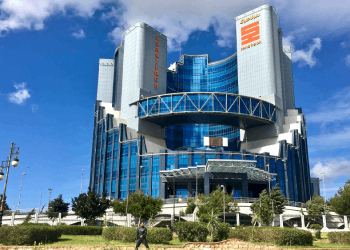 Eni signs $1.35bn Algerian oil and gas deal
Eni signs $1.35bn Algerian oil and gas deal14 July 2025
All of this is only 1% of what MEED.com has to offer
Subscribe now and unlock all the 153,671 articles on MEED.com
- All the latest news, data, and market intelligence across MENA at your fingerprints
- First-hand updates and inside information on projects, clients and competitors that matter to you
- 20 years' archive of information, data, and news for you to access at your convenience
- Strategize to succeed and minimise risks with timely analysis of current and future market trends

Related Articles
-
 Kuwait tenders refinery contract
Kuwait tenders refinery contract15 July 2025
State-owned downstream operator Kuwait National Petroleum Company (KNPC) has issued a tender covering the development of three gas recovery units at the Mina Al-Ahmadi refinery.
KNPC will host a meeting on 22 July with bidders to discuss the scope of work on the tender. It has set a deadline of 12 August for submission of bids.
The front-end engineering and design (feed) work for the project was carried out by Greece’s Asprofos Engineering.
The tender uses the engineering, procurement and construction (EPC) contract model.
The scope of the EPC contract includes developing:
- A refinery flare gas recovery unit
- A high-pressure gas plant flare gas recovery unit
- An acid gas plant flare gas recovery unit
In October last year, Kuwait Petroleum Corporation (KPC), KNPC’s parent company, announced plans to reduce volumes of flared gas in the country.
At the time, KPC said that its upstream subsidiary Kuwait Oil Company (KOC) had reduced total gas flaring to below 1% since 2020 from about 17% in 2005.
It also said that Kuwait Gulf Oil Company, which manages Kuwait’s share of production in the Neutral Zone shared with Saudi Arabia, was investing in projects to reduce gas flaring to 1% “in the medium term”.
KPC did not provide flaring data for KNPC at the time, but said that the company had installed “efficient heaters” and taken other steps to reduce emissions.
KPC has pledged to reach zero routine flaring for its domestic upstream assets by 2030, and for all of its subsidiaries by 2040.
 READ THE JULY 2025 MEED BUSINESS REVIEW – click here to view PDF
READ THE JULY 2025 MEED BUSINESS REVIEW – click here to view PDFUAE and Turkiye expand business links; Renewed hope lies on the horizon for trouble-beset Levant region; Gulf real estate momentum continues even as concerns emerge
Distributed to senior decision-makers in the region and around the world, the July 2025 edition of MEED Business Review includes:
> AGENDA: UAE-Turkiye trade gains momentum> INTERVIEW 1: Building on UAE-Turkiye trade> INTERVIEW 2: Turkiye's Kalyon goes global> INTERVIEW 3: Strengthening UAE-Turkiye financial links> INTERVIEW 4: Turkish Airlines plans further growth> CURRENT AFFAIRS: Middle East tensions could reduce gas investments> GCC REAL ESTATE: Gulf real estate faces a more nuanced reality> PROJECTS MARKET: GCC projects market collapses> INTERVIEW 5: Hassan Allam eyes role in Saudi Arabia’s transformation> INTERVIEW 6: Aseer region seeks new investments for Saudi Arabia> LEADERSHIP: Nuclear power makes a global comeback> LEVANT MARKET FOCUS: Levant states wrestle regional pressures> GULF PROJECTS INDEX: Gulf projects index continues climb> CONTRACT AWARDS: Mena contract award activity remains subdued> ECONOMIC DATA: Data drives regional projects> OPINION: A farcical tragedy that no one can endTo see previous issues of MEED Business Review, please click herehttps://image.digitalinsightresearch.in/uploads/NewsArticle/14265537/main.png -
 Webuild wins $600m Diriyah Square project deal
Webuild wins $600m Diriyah Square project deal14 July 2025
Italian contractor Webuild has announced that it has won a $600m contract from Diriyah Company for a package for the Diriyah Square project.
The contract relates to construction works on package three of the Diriyah Square project. It involves the finishing and mechanical, electrical and plumbing works on more than 70 buildings and public spaces within Diriyah Square.
These assets cover a total area of about 365,000 square metres.
Webuild is already working on the underground multi-storey car park at Diriyah Square.
The three-floor underground car park will serve the mixed-use Diriyah Square district, which will include leisure and entertainment, hotels, retail, grade A offices, the King Salman Grand mosque and residential units designed in the traditional Najdi architectural style.
The car park has a floor area of 1 million square metres, with underground roads and tunnels below Diriyah Square, and a capacity for 10,500 cars.
The parking facility will directly connect commuters with all of Diriyah’s destinations, including Wadi Hanifah, the Western Ring Road and a national motorway. It will be a key component of the City of Riyadh Arterial Road system.
In an official statement on its website, Webuild said that the construction works on the car park are 55% completed.
MEED reported in January 2021 that Diriyah Company had selected Webuild for the super basement car park at the Diriyah project in Riyadh.
Diriyah gigaproject
The Diriyah masterplan envisages the city as a cultural and lifestyle tourism destination. Located northwest of Riyadh’s city centre, it will cover 14 square kilometres and combine 300 years of history, culture and heritage with hospitality facilities.
The company awarded several significant contracts last year, including three contracts worth over SR21bn ($5.5bn). These included an estimated $2bn contract awarded to a joint venture of El-Seif Engineering & Contracting and China State to build the North Cultural District.
In July last year, Diriyah also awarded a $2.1bn package to a joint venture of local contractor Albawani and Qatar’s Urbacon to construct assets in the Wadi Safar district of the gigaproject.
Then in December, Diriyah Company awarded an estimated SR5.8bn ($1.5bn) contract to a joint venture of local firm Nesma & Partners and the local branch of Man Enterprise for its Jabal Al-Qurain Avenue cultural district, located in the northern district of the Diriyah Gate project.
Once complete, Diriyah will have the capacity to accommodate 100,000 residents and visitors.
 READ THE JULY 2025 MEED BUSINESS REVIEW – click here to view PDF
READ THE JULY 2025 MEED BUSINESS REVIEW – click here to view PDFUAE and Turkiye expand business links; Renewed hope lies on the horizon for trouble-beset Levant region; Gulf real estate momentum continues even as concerns emerge
Distributed to senior decision-makers in the region and around the world, the July 2025 edition of MEED Business Review includes:
> AGENDA: UAE-Turkiye trade gains momentum> INTERVIEW 1: Building on UAE-Turkiye trade> INTERVIEW 2: Turkiye's Kalyon goes global> INTERVIEW 3: Strengthening UAE-Turkiye financial links> INTERVIEW 4: Turkish Airlines plans further growth> CURRENT AFFAIRS: Middle East tensions could reduce gas investments> GCC REAL ESTATE: Gulf real estate faces a more nuanced reality> PROJECTS MARKET: GCC projects market collapses> INTERVIEW 5: Hassan Allam eyes role in Saudi Arabia’s transformation> INTERVIEW 6: Aseer region seeks new investments for Saudi Arabia> LEADERSHIP: Nuclear power makes a global comeback> LEVANT MARKET FOCUS: Levant states wrestle regional pressures> GULF PROJECTS INDEX: Gulf projects index continues climb> CONTRACT AWARDS: Mena contract award activity remains subdued> ECONOMIC DATA: Data drives regional projects> OPINION: A farcical tragedy that no one can endTo see previous issues of MEED Business Review, please click herehttps://image.digitalinsightresearch.in/uploads/NewsArticle/14259832/main.jpg -
 August deadline for Diriyah Pendry superblock package
August deadline for Diriyah Pendry superblock package14 July 2025

Saudi gigaproject developer Diriyah Company has asked firms to submit commercial proposals by 13 August for a contract to build the Pendry superblock package in the second phase of the Diriyah Gate development (DG2).
MEED understands that the tender was issued in June, with the technical bid submission deadline set for 6 July.
The Pendry superblock encompasses the construction of a hotel, known as the Pendry Hotel, along with residential and commercial assets.
The project will span an area of 75,365 square metres and is located in the northwestern district of the DG2 area.
Earlier this month, MEED exclusively reported that Diriyah Company is preparing to tender more superblock packages this quarter, following the receipt of prequalification statements from interested firms.
Notices were issued in mid-June for packages that include the Waldorf Astoria superblock and the Edition superblock, both located in DG2.
The Waldorf Astoria superblock is a mixed-use development featuring the Waldorf Astoria Residences & Hotel, commercial and residential facilities and office spaces.
The Waldorf Astoria Hotel is a 200-key property, while the Waldorf Astoria Residences will offer around 46 branded residences.
The project is located along the Grand Boulevard South and the Northern Arterial Road in the Boulevard Northwestern district at DG2.
The prequalification documents for this package were submitted on 29 June.
Prequalification documents for the Edition superblock were submitted on 2 July.
This package comprises a mix of residential, commercial and office spaces, including the 200-key Edition Hotel and 150-key Equinox Hotel.
The project is situated between King Khalid Road and the Grand Boulevard within the Boulevard East district in DG2.
Diriyah Company has also received prequalification statements from firms interested in constructing the upcoming Radisson Red superblock in DG2.
The Radisson Red superblock comprises a hotel, residential apartments, retail facilities, commercial office spaces and a park.
The project is situated in the Boulevard East district, between King Khalid Road and the Grand Boulevard in Diriyah.
Diriyah also tendered a contract in April to build the new iconic museum in the DG2 area.
Diriyah gigaproject
The Diriyah masterplan envisages the city as a cultural and lifestyle tourism destination. Located northwest of Riyadh’s city centre, it will cover 14 square kilometres and combine 300 years of history, culture and heritage with hospitality facilities.
The company awarded several significant contracts last year, including three contracts worth over SR21bn ($5.5bn). These included an estimated $2bn contract awarded to a joint venture of El-Seif Engineering & Contracting and China State to build the North Cultural District.
In July last year, Diriyah also awarded a $2.1bn package to a joint venture of local contractor Albawani and Qatar’s Urbacon to construct assets in the Wadi Safar district of the gigaproject.
Then in December, Diriyah Company awarded an estimated SR5.8bn ($1.5bn) contract to a joint venture of local firm Nesma & Partners and the local branch of Man Enterprise for its Jabal Al-Qurain Avenue cultural district, located in the northern district of the Diriyah Gate project.
Once complete, Diriyah will have the capacity to accommodate 100,000 residents and visitors.
 READ THE JULY 2025 MEED BUSINESS REVIEW – click here to view PDF
READ THE JULY 2025 MEED BUSINESS REVIEW – click here to view PDFUAE and Turkiye expand business links; Renewed hope lies on the horizon for trouble-beset Levant region; Gulf real estate momentum continues even as concerns emerge
Distributed to senior decision-makers in the region and around the world, the July 2025 edition of MEED Business Review includes:
> AGENDA: UAE-Turkiye trade gains momentum> INTERVIEW 1: Building on UAE-Turkiye trade> INTERVIEW 2: Turkiye’s Kalyon goes global> INTERVIEW 3: Strengthening UAE-Turkiye financial links> INTERVIEW 4: Turkish Airlines plans further growth> CURRENT AFFAIRS: Middle East tensions could reduce gas investments> GCC REAL ESTATE: Gulf real estate faces a more nuanced reality> PROJECTS MARKET: GCC projects market collapses> INTERVIEW 5: Hassan Allam eyes role in Saudi Arabia’s transformation> INTERVIEW 6: Aseer region seeks new investments for Saudi Arabia> LEADERSHIP: Nuclear power makes a global comeback> LEVANT MARKET FOCUS: Levant states wrestle regional pressures> GULF PROJECTS INDEX: Gulf projects index continues climb> CONTRACT AWARDS: Mena contract award activity remains subdued> ECONOMIC DATA: Data drives regional projects> OPINION: A farcical tragedy that no one can endTo see previous issues of MEED Business Review, please click herehttps://image.digitalinsightresearch.in/uploads/NewsArticle/14258798/main0303.jpg -
 Penspen to expand workforce in Neutral Zone
Penspen to expand workforce in Neutral Zone14 July 2025

UK-based engineering and project management company Penspen is expanding its headcount in the Neutral Zone, which is shared by Saudi Arabia and Kuwait, according to a senior executive.
Penspen currently has 130 employees working in the Neutral Zone, also known as the Divided Zone. The company expects to increase the headcount to 200 by the end of the year, according to Neale Carter, the company’s executive vice-president for the Middle East, Africa and Asia-Pacific.
“It’s a challenging environment, but we’re very pleased to be there,” he said.
Penspen was invited to join the tendering programme for a range of projects for state-owned Kuwait Gulf Oil Company (KGOC), which is a partner in Al-Khafji Joint Operations (KJO) alongside Saudi Arabia’s Aramco Gulf Operations Company (AGOC).
Penspen was previously the project management consultant for KJO in the Neutral Zone from 2006 until 2017, when US-based Jacobs replaced them in the role.
Penspen then went through the tendering process in 2022 and won the contract back in 2023.
The current contract is a five-year project management consultancy services contract.
The Neutral Zone has seen an uptick in oil and gas activity in the past couple of years.
In May, MEED reported that KJO has more than 20 projects currently ongoing to develop the Khafji field, which is located in the shared territory.
Additionally, KJO is currently in the tendering phase with engineering, procurement and construction (EPC) works on the Dorra gas field development project, which is also located in the Divided Zone.
KJO has divided the scope of work on the Dorra gas field development project, which is estimated to be valued at up to $10bn, into four EPC packages – three offshore and one onshore.
In May, Saudi Arabia and Kuwait announced a new oil discovery in the shared territory.
The oil was discovered in the North Wafra Wara-Burgan field, located five kilometres north of the onshore Wafra field, within Wafra Joint Operations – a 50:50 joint venture of Kuwait Gulf Oil Company and US energy company Chevron.
 READ THE JULY 2025 MEED BUSINESS REVIEW – click here to view PDF
READ THE JULY 2025 MEED BUSINESS REVIEW – click here to view PDFUAE and Turkiye expand business links; Renewed hope lies on the horizon for trouble-beset Levant region; Gulf real estate momentum continues even as concerns emerge
Distributed to senior decision-makers in the region and around the world, the July 2025 edition of MEED Business Review includes:
> AGENDA: UAE-Turkiye trade gains momentum> INTERVIEW 1: Building on UAE-Turkiye trade> INTERVIEW 2: Turkiye's Kalyon goes global> INTERVIEW 3: Strengthening UAE-Turkiye financial links> INTERVIEW 4: Turkish Airlines plans further growth> CURRENT AFFAIRS: Middle East tensions could reduce gas investments> GCC REAL ESTATE: Gulf real estate faces a more nuanced reality> PROJECTS MARKET: GCC projects market collapses> INTERVIEW 5: Hassan Allam eyes role in Saudi Arabia’s transformation> INTERVIEW 6: Aseer region seeks new investments for Saudi Arabia> LEADERSHIP: Nuclear power makes a global comeback> LEVANT MARKET FOCUS: Levant states wrestle regional pressures> GULF PROJECTS INDEX: Gulf projects index continues climb> CONTRACT AWARDS: Mena contract award activity remains subdued> ECONOMIC DATA: Data drives regional projects> OPINION: A farcical tragedy that no one can endTo see previous issues of MEED Business Review, please click herehttps://image.digitalinsightresearch.in/uploads/NewsArticle/14254527/main.jpg -
 Eni signs $1.35bn Algerian oil and gas deal
Eni signs $1.35bn Algerian oil and gas deal14 July 2025
Algeria’s state-owned oil and gas company Sonatrach and the Italian company Eni have signed a production-sharing hydrocarbons contract (PSC) estimated to be worth $1.35bn.
The contract covers the exploration and exploitation of the Zemoul El-Kebir concession area, located in the Berkine Basin, approximately 300 kilometres east of Hassi Messaoud, according to a statement by Sonatrach.
The deal with Eni is the latest in a string of high-profile agreements that Sonatrach has announced with international oil and gas companies.
The contract with Eni was signed under Hydrocarbons Law No 1913 and extends for a period of 30 years, with an extendable option for an additional 10 years.
It includes a seven-year exploration period, with $110m of the estimated $1.35bn investment budget expected to be used in the exploration phase.
In its statement, Sonatrach said: “The work programme associated with this contract includes the use of innovative technological methods, including the latest digital solutions related to exploitation, in addition to the use of modern technologies to improve production and recover reserves.
“It is worth noting that, within the framework of implementing this contract, preference is given to the use of local content and the use of subcontracting services from national operators.”
Expected production from the area covered by the deal has been estimated at 415 million barrels of oil equivalent, including 9.3 billion cubic metres of gas, over the contract period.
The signing of the final PSC with Eni follows a provisional deal that was signed between Sonatrach and Eni on 19 May 2024.
As well as signing the PSC relating to the Zemoul El-Kebir concession area, the two parties also signed a gas agreement aimed at defining the terms of the hydrocarbons contract relating to the marketing of dry gas quantities from the operating area, intended for export.
A framework agreement was also signed between Sonatrach and Eni Corporate University, aiming to develop the skills of Sonatrach employees and transfer knowledge through the Eni Corporate University training institution, for a period of three years.
In June, Algeria awarded five out of the six oil and gas exploration licences it offered during its 2024 bidding round, a move viewed as a success by stakeholders in the country’s energy sector.
The companies that were awarded blocks included France’s TotalEnergies, state-owned QatarEnergy, Eni and PTTEP of Thailand.
The latest licensing round was followed by meetings between Algeria’s President Abdelmadjid Tebboune and delegations from US-based oil and gas companies ExxonMobil and Chevron.
Project activity across Algeria’s energy, industrial and manufacturing sectors is steadily building as the country focuses on a vertically-integrated strategy that leverages the exploitation of its natural resources.
 READ THE JULY 2025 MEED BUSINESS REVIEW – click here to view PDF
READ THE JULY 2025 MEED BUSINESS REVIEW – click here to view PDFUAE and Turkiye expand business links; Renewed hope lies on the horizon for trouble-beset Levant region; Gulf real estate momentum continues even as concerns emerge
Distributed to senior decision-makers in the region and around the world, the July 2025 edition of MEED Business Review includes:
> AGENDA: UAE-Turkiye trade gains momentum> INTERVIEW 1: Building on UAE-Turkiye trade> INTERVIEW 2: Turkiye's Kalyon goes global> INTERVIEW 3: Strengthening UAE-Turkiye financial links> INTERVIEW 4: Turkish Airlines plans further growth> CURRENT AFFAIRS: Middle East tensions could reduce gas investments> GCC REAL ESTATE: Gulf real estate faces a more nuanced reality> PROJECTS MARKET: GCC projects market collapses> INTERVIEW 5: Hassan Allam eyes role in Saudi Arabia’s transformation> INTERVIEW 6: Aseer region seeks new investments for Saudi Arabia> LEADERSHIP: Nuclear power makes a global comeback> LEVANT MARKET FOCUS: Levant states wrestle regional pressures> GULF PROJECTS INDEX: Gulf projects index continues climb> CONTRACT AWARDS: Mena contract award activity remains subdued> ECONOMIC DATA: Data drives regional projects> OPINION: A farcical tragedy that no one can endTo see previous issues of MEED Business Review, please click herehttps://image.digitalinsightresearch.in/uploads/NewsArticle/14254529/main.png

 Gaza conflict renews violence in Syria
Gaza conflict renews violence in Syria